WHEN, HOW and WHY to incorporate barbell training into your periodised training program
Barbell training is not for everyone; with high demands on mobility, stability and co-ordination – as well as potentially life altering loads – the barbell must be considered an advanced training tool and as such it is not for everyone…..or is it?
Barbells seemingly have been around forever; they’re used in the Olympics, they’re used in powerlifting and they’ve become ever more popular with the advent of Crossfit and Grid type events. If you’ve heard of Instagram/TikTok you’ll sometimes see people using them on there as well….sometimes they even use them properly haha!

Personally I love barbells. I use them with my own training and I use them with my clients each and every single day, however I don’t use them with everybody and I don’t use them for every single movement pattern. The barbell in my opinion is a tool for adding load and that’s what makes it advanced. I also don’t just use normal barbells but more on that to come….
As coaches and personal trainers – especially nowadays when we are expected to be physiotherapists as well – adding load SHOULD BE the last piece of the puzzle when working with clients. Think about it; most of the people that come in to see you can barely touch their toes! They can’t twist, they can’t get the arms overhead and they sure as hell can’t get up and down off the floor without some serious shenanigans so the barbell is a long way down the road for them!
That’s why barbells are considered an advanced training tool; until our clients are confident and competent with their own body weight and move pain free then we shouldn’t really be worrying about adding too much external load.
So I wanted to get that out of the way because it’s important to clarify that barbells are not for everybody at the start of their fitness journey. That being said they can make training a lot of fun and that is what we’re going to learn today; how do we incorporate barbells into training programs and how do we make them more ACCESSIBLE for the general population.
Step one to making barbells more accessible to people is to stop demanding that they complete their exercises or reps to “competition standard” – I’m thinking deadlift from the floor here – that we’ve seen maybe on the Internet or popularized by your favorite Fitness professional or personality. Partial reps, half ranges of motion, quarter reps; these things all have a place in a training program for a client that’s looking to improve their access to this movement or in this case a certain implement – the barbell.
Secondly and just as importantly, we need to redefine our definition of a “barbell” and embrace the ingenuity of companies such as Kabuki Strength ( https://store.kabukistrength.net/) – led by the enigmatic and extremely accomplished strength athlete and coach Chris Duffin – and open our eyes to adaptations that allow us and our clients to get stronger safely.
Think about this for yourself. One of the worst things someone can tell you to do is to STOP doing something, especially if it’s something you’ve been doing for a long time or if it’s something you are connected to! I know that’s the case for myself – just ask my wife how much I like being told to slow down or stop!!
Oftentimes people are fed up hearing that they should just stop doing the thing that’s causing them pain or discomfort, when what they really want to hear are some alternative solutions and options to adapt without stopping altogether. Let’s be honest, Cancel culture is as toxic for health and movement as it is for our societies’ freedom of expression and opinion.
My approach is the same for movement as it would be for the keyboard warriors and the “PC Police” – education, compassion and safe, gradual exposure to that which you claim to hate with the guidance of an experienced and empathetic coach – then you can make an informed choice.
That’s where our progressions/regressions and smart programming – and smarter implement choice – can come into play for our clients and we’ll cover that next.
So the answer to “WHEN, HOW and WHY to incorporate barbell training” is partly based on the client’s current capacity vs needs and partly in your ability as a coach to recognise and correct technique using cuing, interventions and ADAPTATIONS to programming and equipment.
Screen like a machine!
A good assessment will gain and retain your clients and choosing the right barbell for your client comes from a proper assessment session and being able to
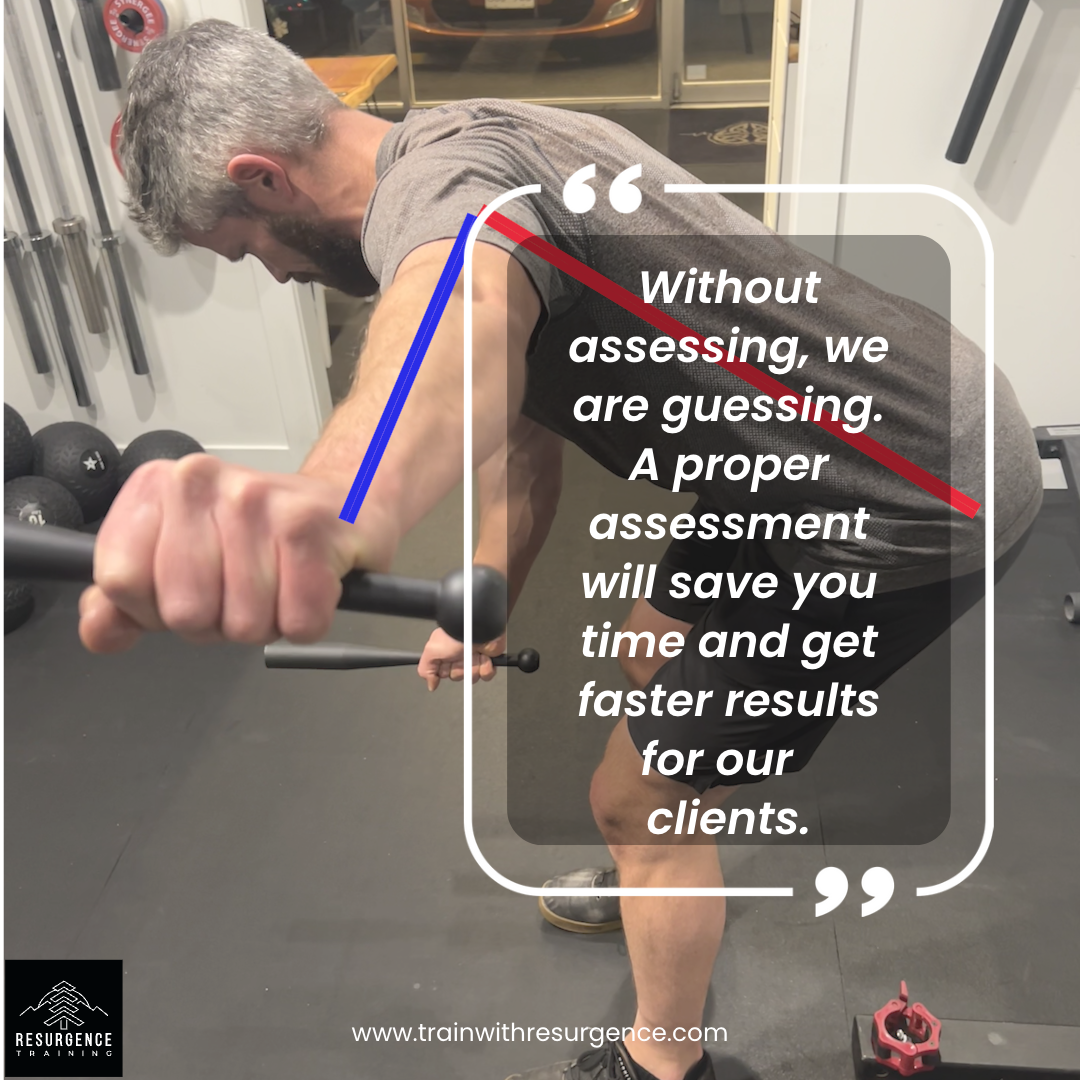 interpret the findings….but that’s a whole course in and of itself there! However don’t fret help is at hand! My goal with Resurgence Training is education for everyone so if you want some FREE assessment guides and walkthroughs as well as access to a host of corrective exercises and drills head over to RESURGENCE TRAINING and subscribe to my YouTube channel.
interpret the findings….but that’s a whole course in and of itself there! However don’t fret help is at hand! My goal with Resurgence Training is education for everyone so if you want some FREE assessment guides and walkthroughs as well as access to a host of corrective exercises and drills head over to RESURGENCE TRAINING and subscribe to my YouTube channel.
If you would like to use any of my exercise tutorial videos for your clients please do, just make sure to like and subscribe or I’ll be chasing you down 😜!
I’m also posting educational story boards on Instagram, with regular real client issues and challenges with movement walked through and explained almost every day – check me out @resurgence_training and give me a follow/come say hello!
Let’s take the back squat as an example; what are the most common issues you see with Barbell Squats and what are some of the potential causes?
The table below details some common squat faults and their potential causes:
COMMON BACK SQUAT FAULTS
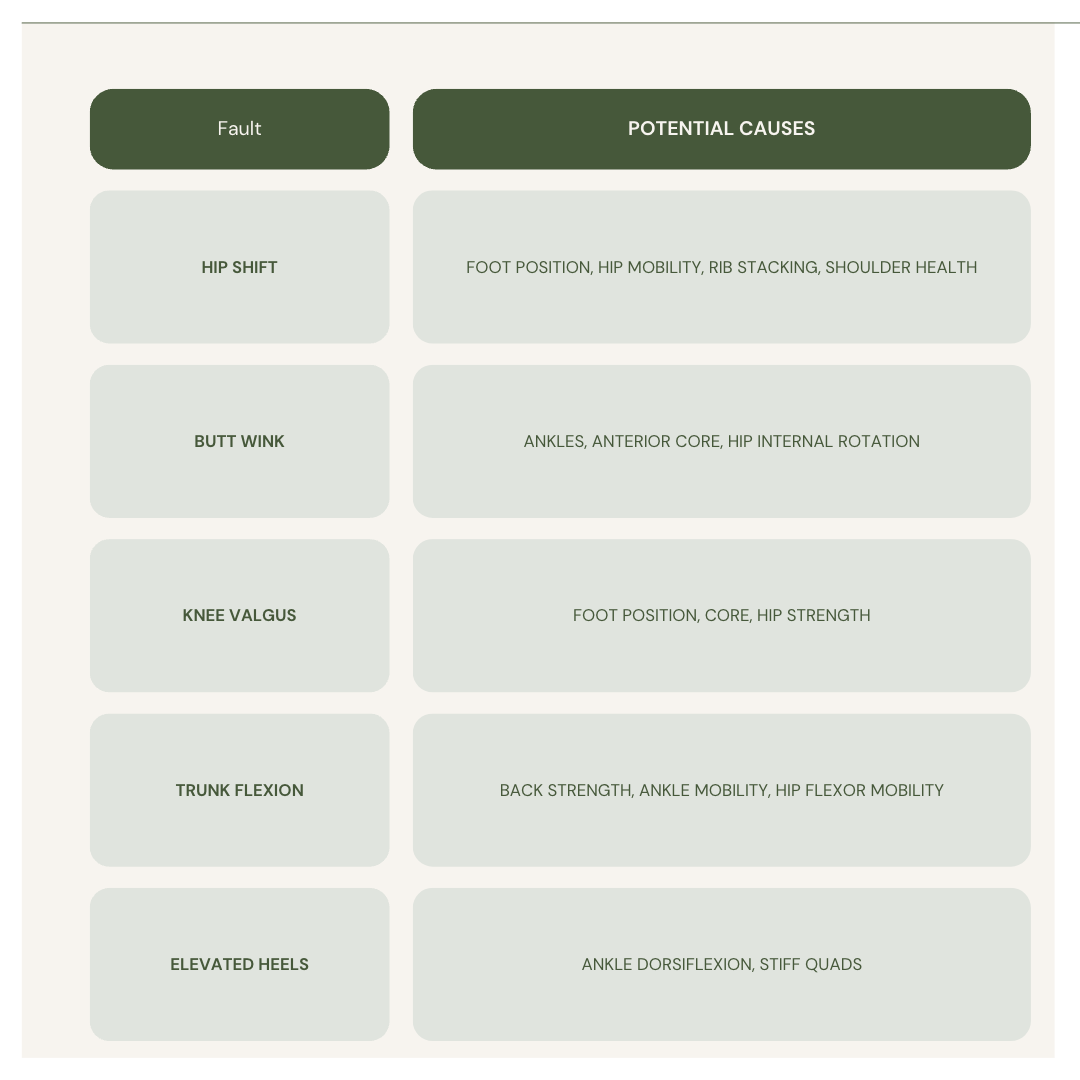
I’ll share one example from a recent assessment of mine on fellow coach Brandt Seibel from BPM Fitness Center in Victoria, BC my current home town and training location (http://www.bpmfitnesscentre.com).
Brandt came to me complaining of sciatic-like symptoms on his left side especially when back squatting, as well as restrictions accessing his overhead positions. When we looked at his back squat (below) we can see the torsion in his mid/low back and the difference in wrist/elbow position from side to side AND When we look at Brandt’s “Wall arm slide Test” – which is an assessment of thoracic mobility, a key component of holding a barbell – we can see some striking similarities in the thorax:\
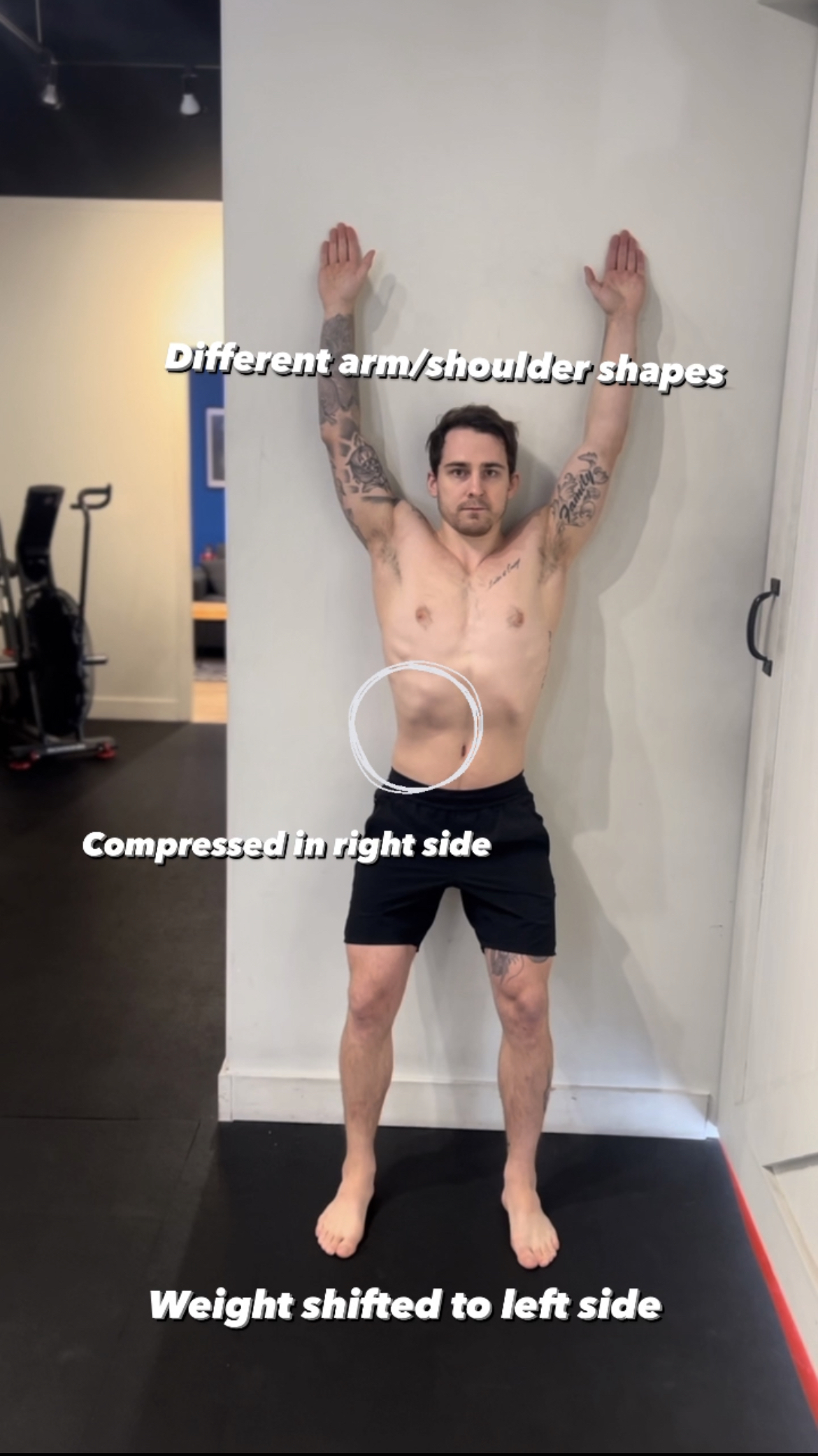
WALL ARM SLIDE
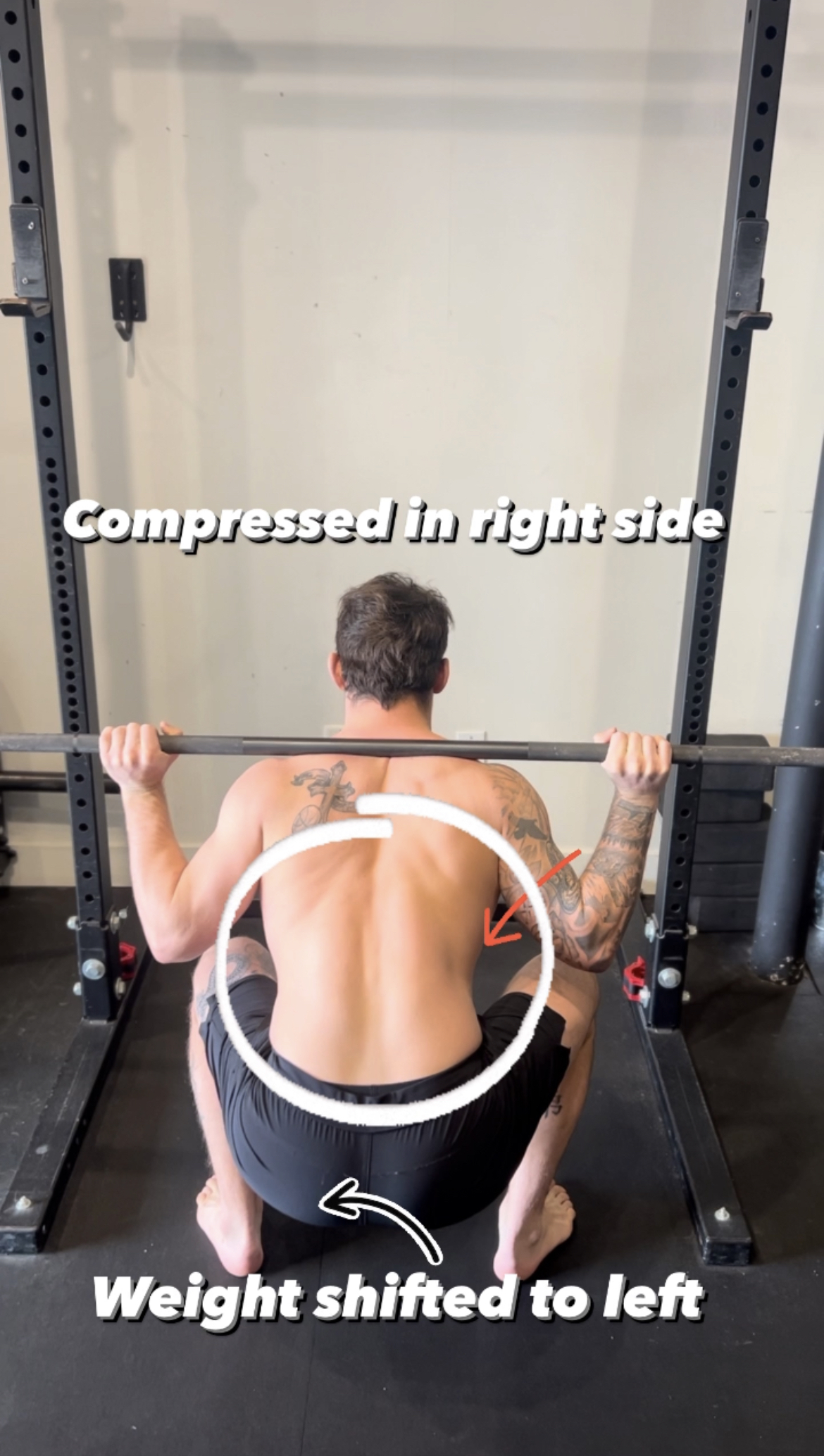
BARBELL BACK SQUAT
So we can clearly see that putting a regular barbell on Brandt’s back is beyond his capacity to access at the moment (as would be straight bar bench press), so we should remove all barbell movements from his programming for at least 6 months until he gets better mobility……right?
WRONG!!!
It’s your job as a coach to find solutions and a simple one would be to remove the demand on the shoulders by utilising a bar called the “Safety Squat Bar” or SSB from now on (see image ).
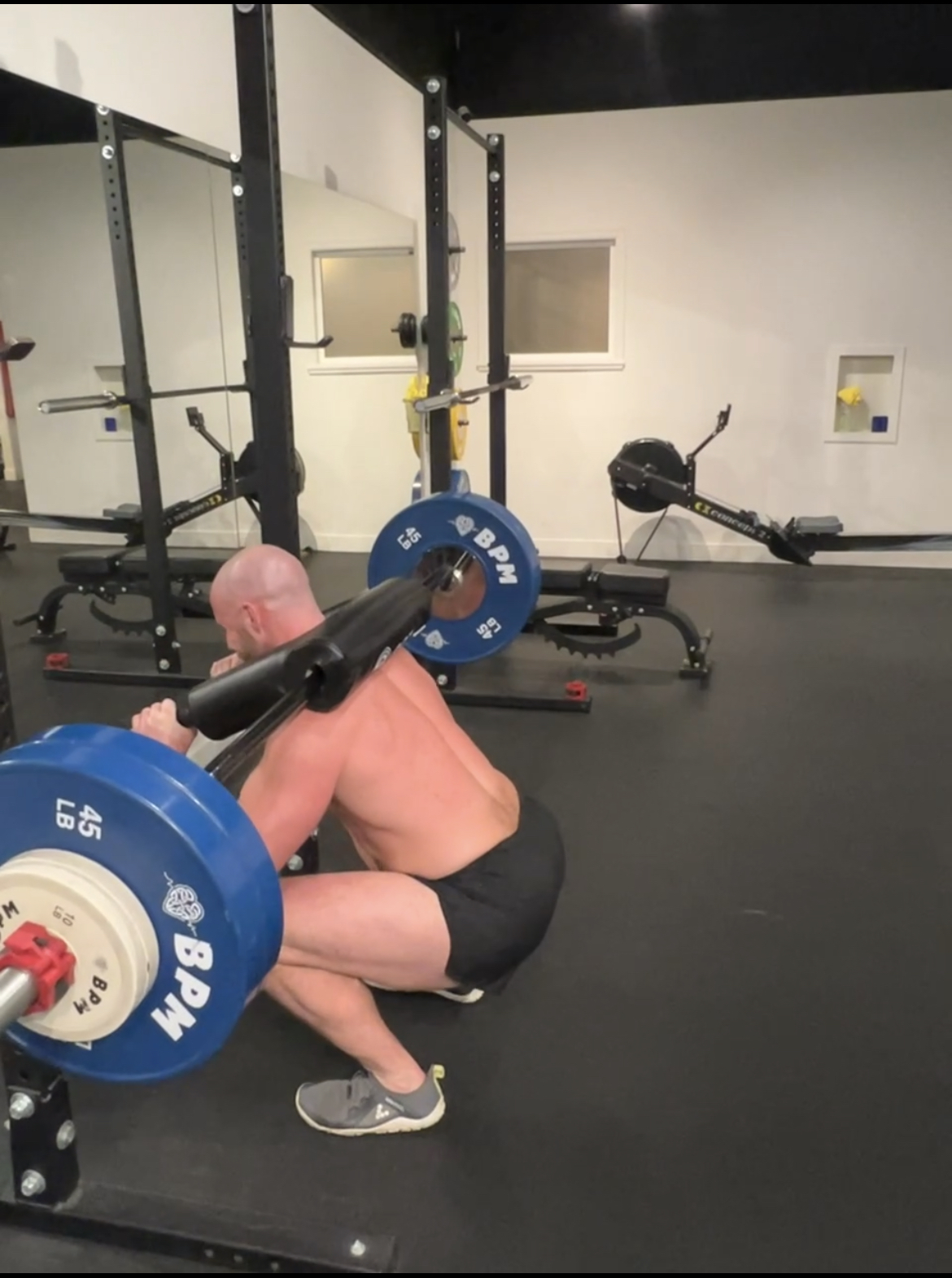
SAFETY BAR SQUAT
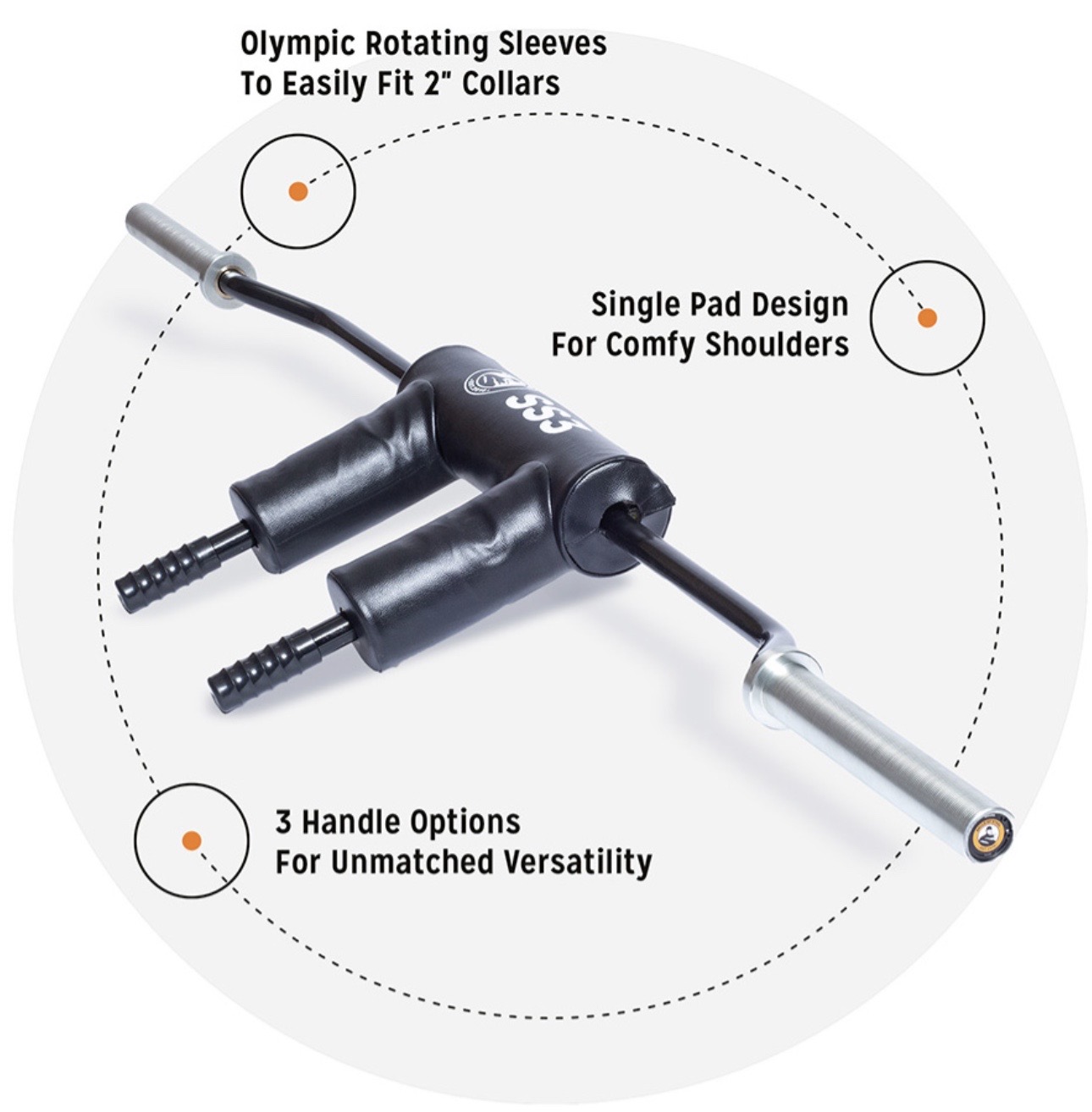
SAFETY SQUAT BAR – BELLS OF STEEL
I use the one from Bells of Steel fitness and I have nothing but great things to say about it! The benefit of this bar is that it essentially allows you to back squat without putting your arms up – perfect for those with funky shoulders like Brandt! https://www.bellsofsteel.com/product-category/best-sellers/?gclid=Cj0KCQjw8e-gBhD0ARIsAJiDsaXszzdR-6hA3Sbo4aYgPCy_20vnt8nzyw4JGnxgYsbGnId2_EYz3oUaAhMAEALw_wcB
Another “specialty bar” I regularly use from the same company is called the Nemesis Bar (see below) which is an arched bar with neutral grips – absolutely game changing for stiff tight shoulders. The curve in the bar allows the user to access greater depth before the shoulders risk internal rotation, which we want to avoid at the bottom of our press. The neutral grip is again more advantageous for the shoulder and can be a valid option for many who gave up on the bench press years ago.
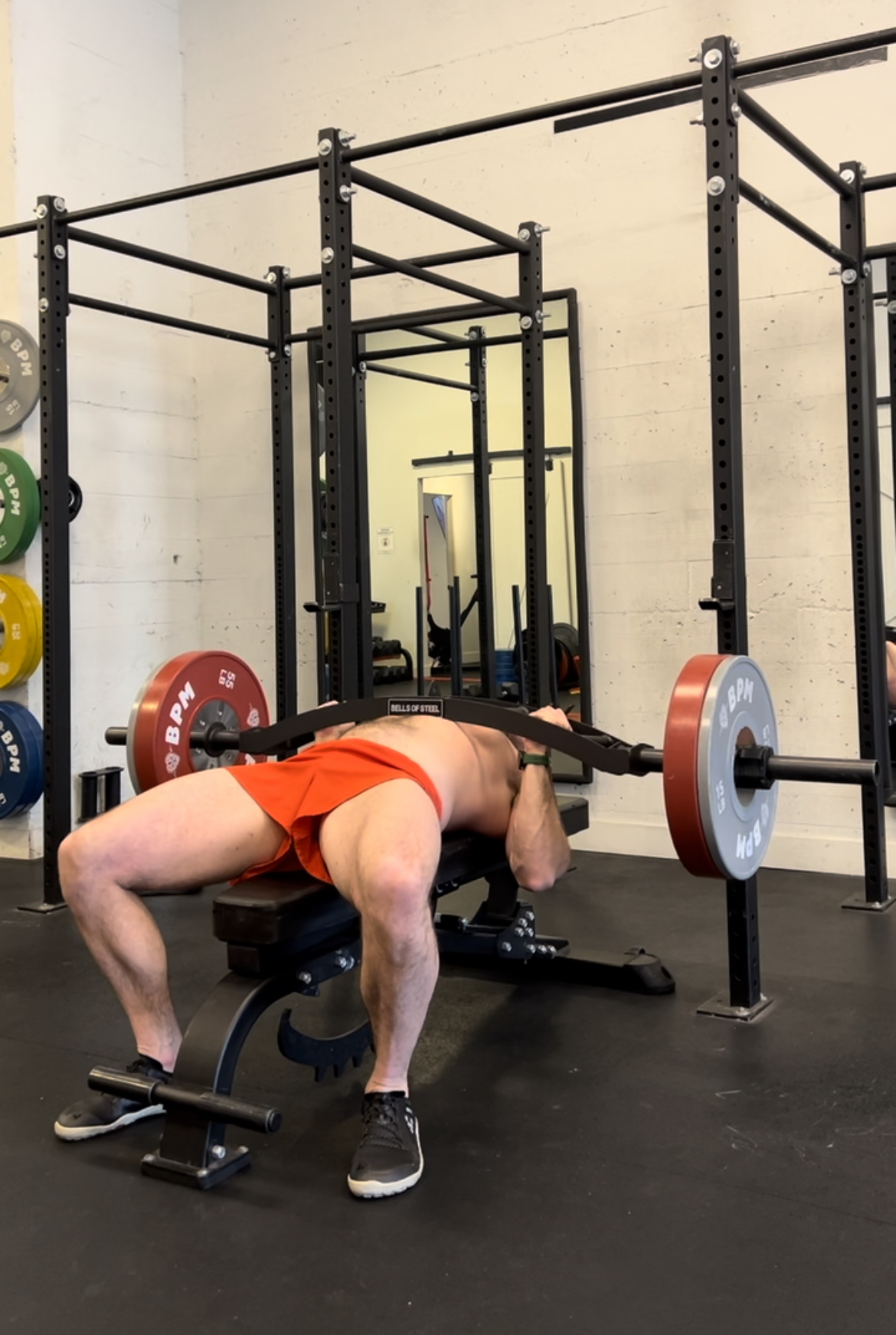
ARCH NEMESIS BENCH PRESS
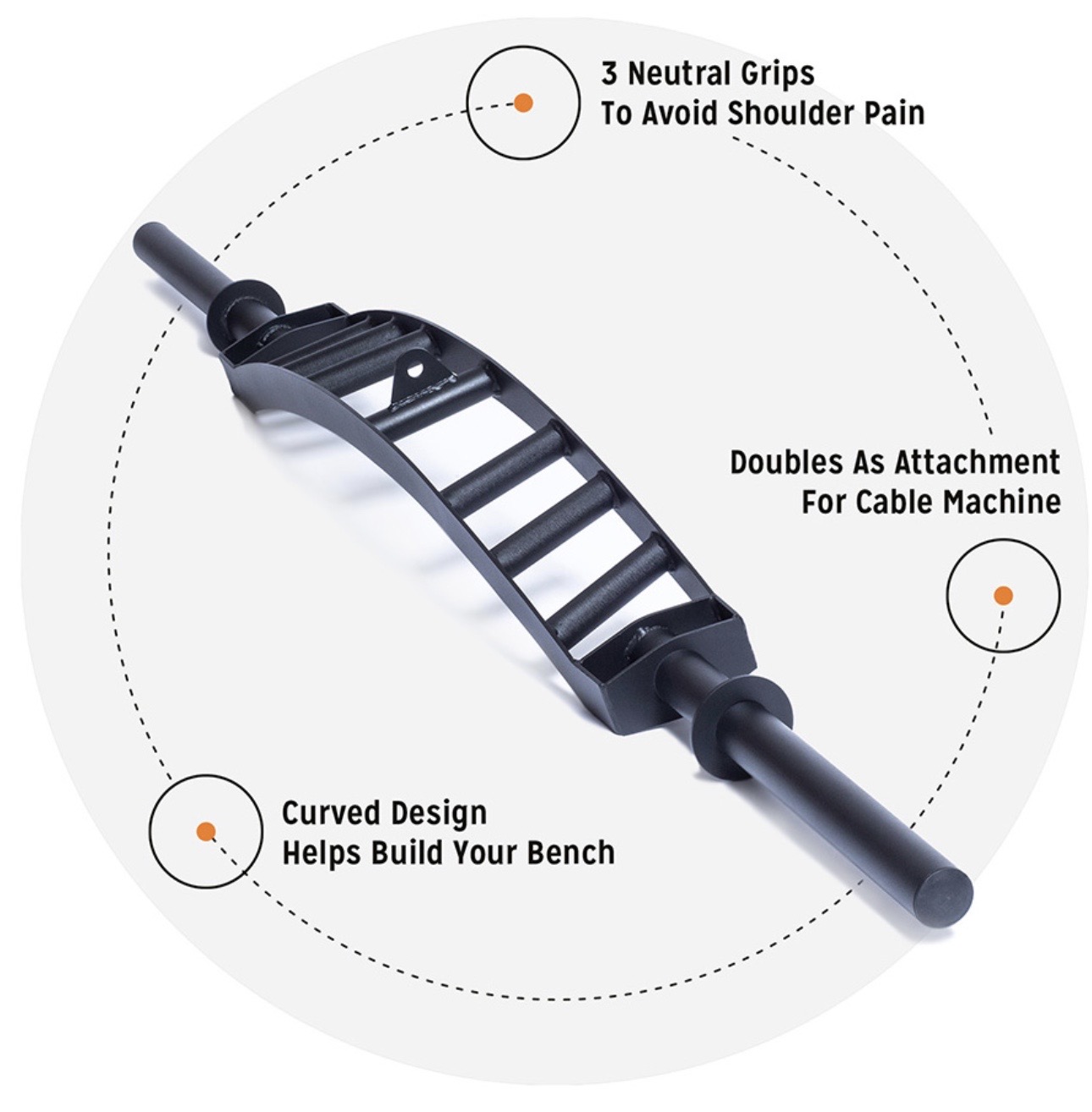
ARCH NEMESIS BAR – BELLS OF STEEL
Now I’m NOT saying that we can just adapt the implement and ignore the restrictions – it’s your job to help improve that – but I AM saying that we can work around it for now to allow our clients to train the way they want to while still staying safe and that’s the key to consistency and progress.
So the next time you go to program a barbell lift for your client, I hope you’ll take a second to pause and consider the SUITABILITY of the program for your client and more importantly come up with ways to KEEP THEM MOVING each and every day.
Paul Meakin
Resurgence Training
March 2023

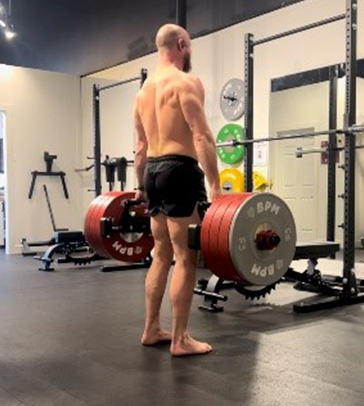

Leave A Comment